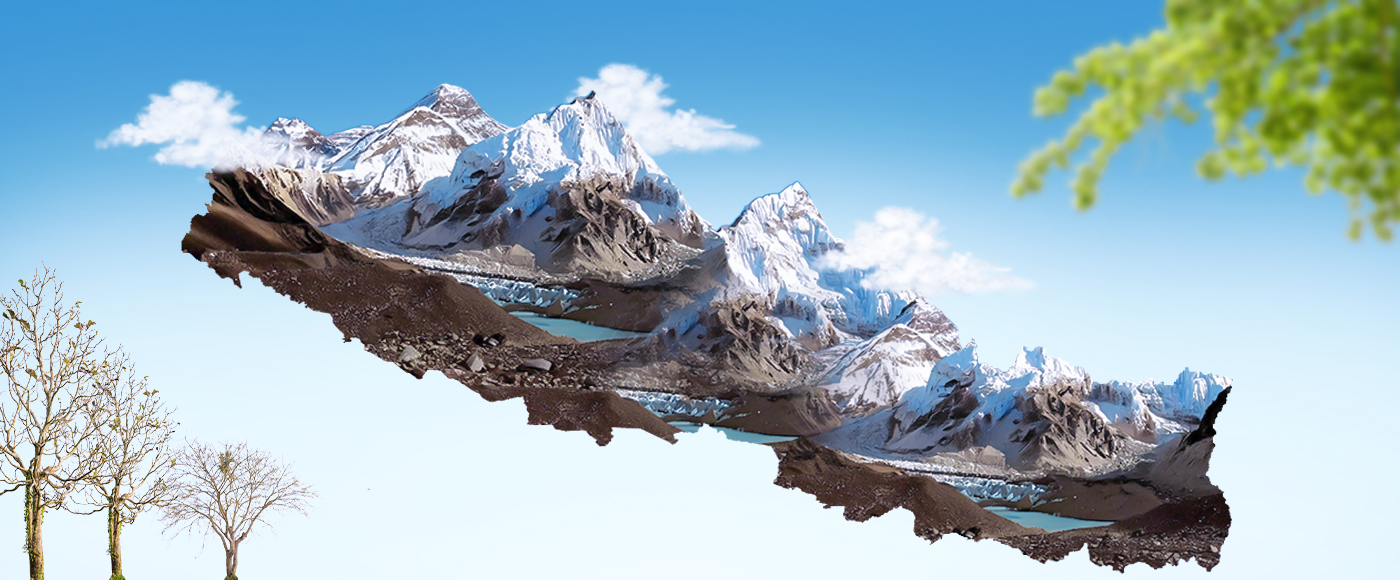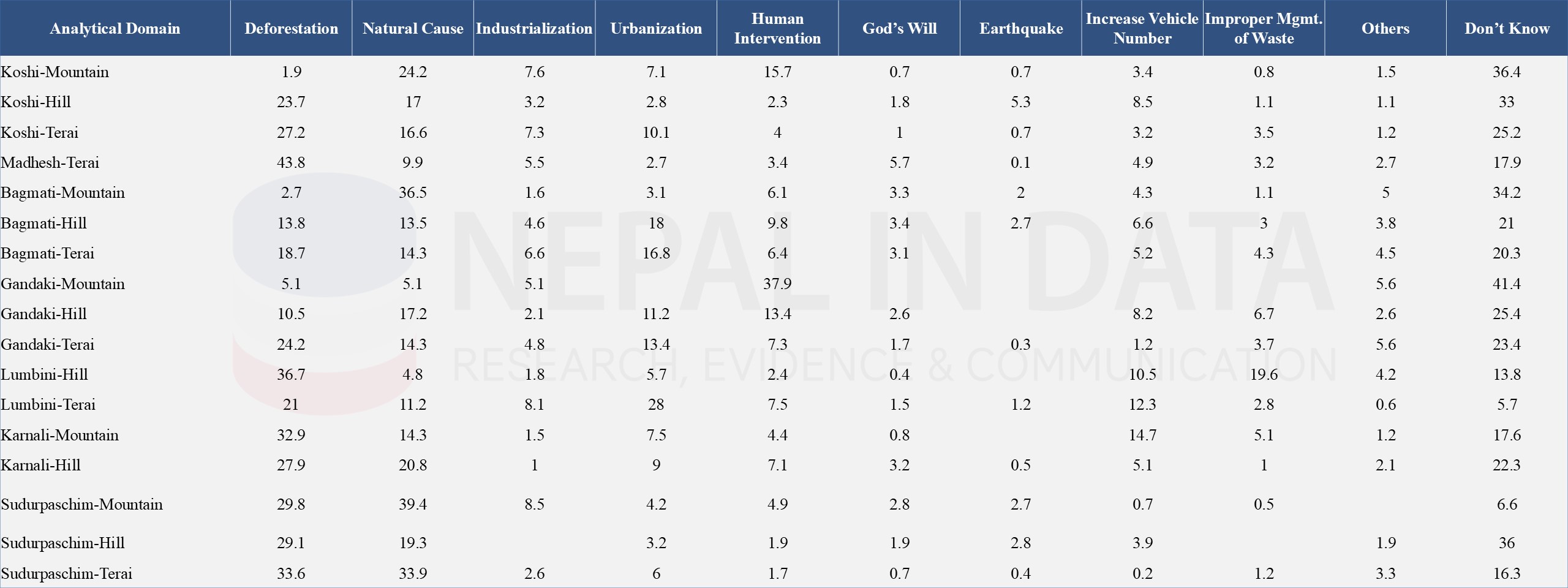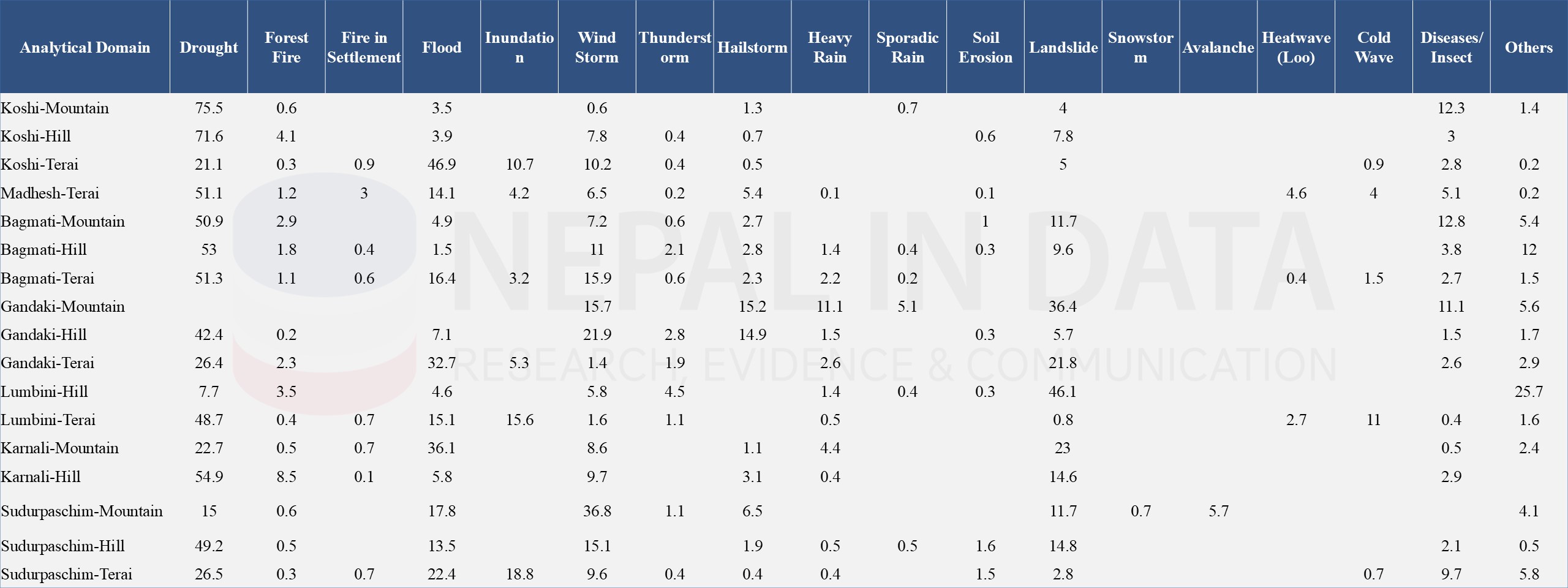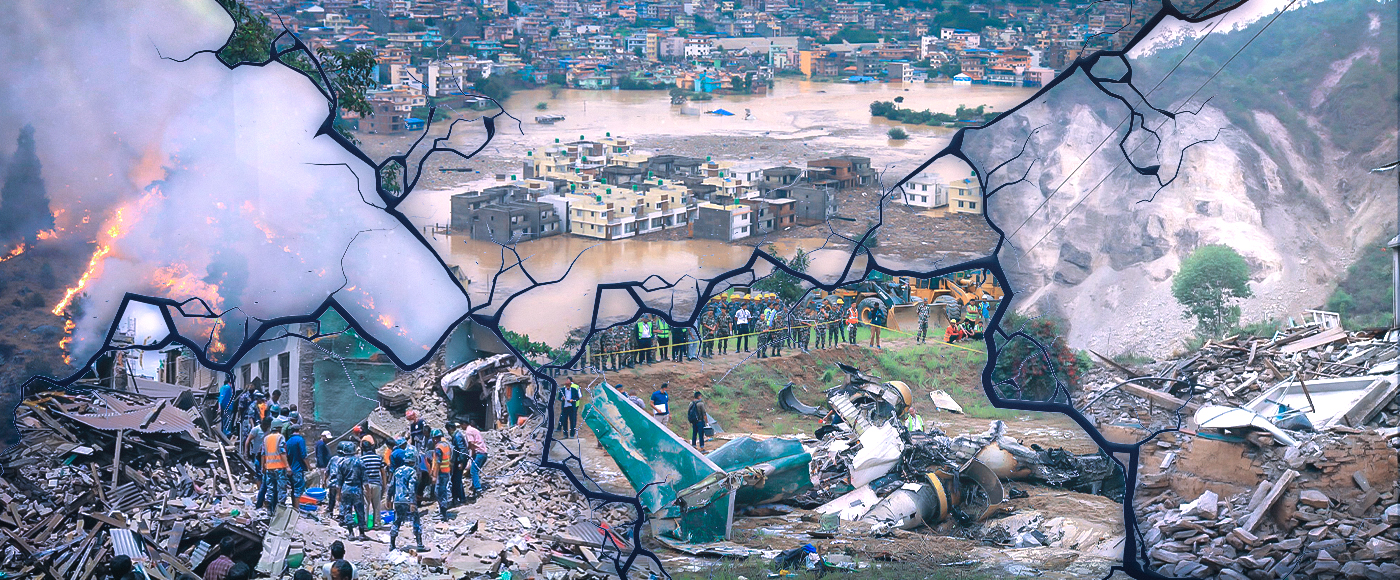Climate Relevant Budget Allocation
Nepal's climate change-related budget focuses on addressing the impacts of climate change, adaptation, resilience, disaster risk reduction, renewable energy, forestry, biodiversity, and capacity development. The following chart shows the proportion of the climate change budget allocated to the total budget of the government of Nepal in different fiscal years. Allocation in the climate change budget is continuously increasing on direct and indirect benefits while expenditures with a high portion on neutral spending.
Chart 1: Proportion of Climate Change Budget in Annual Budget (%)

The following Table 1 shows the contribution to Nepal's climate change budget from different sources. Most of the climate change budget covered by the government over the past five fiscal years, while donor grants have consistently provided around 4 percent and loans have varied between 13 to 18 percent. The increasing share of loans highlights the importance of managing debt effectively to ensure the long-term sustainability of climate financing.
Table 1: Contribution to Climate Change Budget by Source
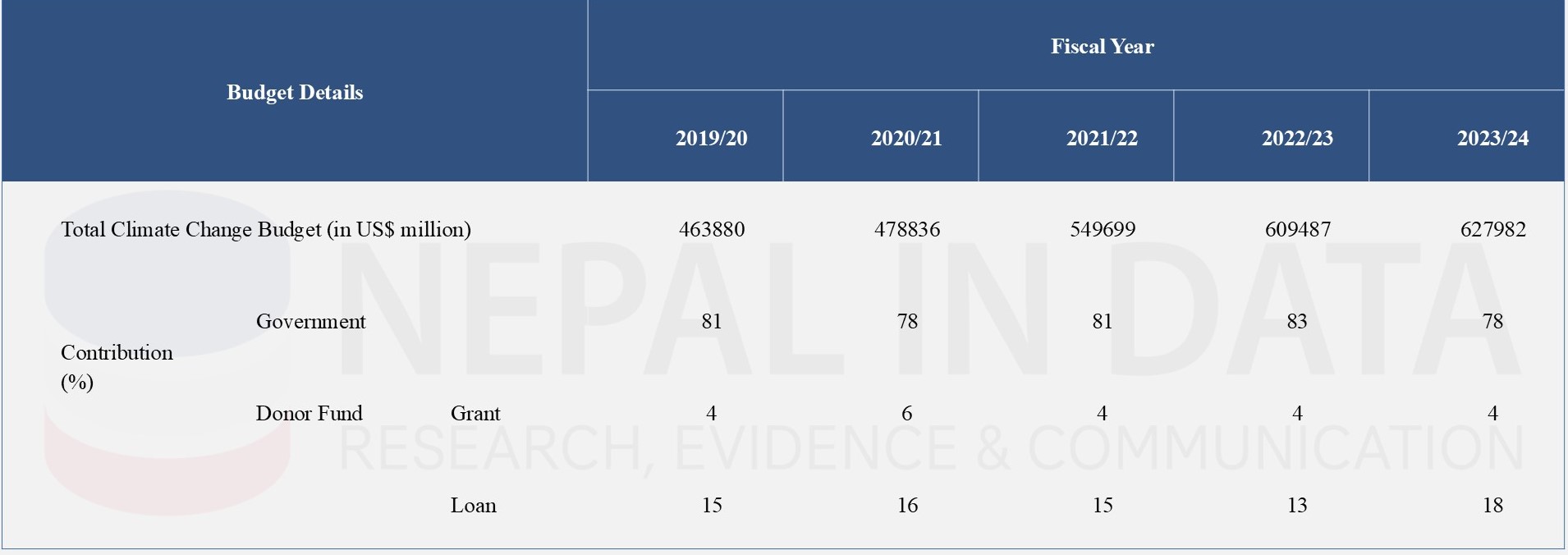
Perception of Climate Change
The perception of climate change is the combination of personal experiences, cultural beliefs, and scientific understanding. Table 2 presents the status of households aware of climate change. Out of the total households of Nepal, nearly 36 percent are aware of climate change. Majority of households in the mountain region and female respondents are unaware of climate change. These findings highlight a difference in awareness levels across geographical regions and gender, needed for targeted awareness programs to ensure the understanding of climate change among diverse demographics.
Table 2: Households Aware of Climate Change, 2022

Table 3 shows the primary source of information about climate change for respondents. Data shows that the major sources of communication to communicate information about climate change among people are radio and television. Especially households belonging to remote areas or economically backward were mostly getting information through radio. This finding shows the diverse range of channels through which individuals can acquire knowledge about climate change.
Table 3: Major Source of Information About Climate Change, 2022

Table 4 shows the perception of the households about the feeling of climate change. 87 percent of households experienced climate change over the past 25 years in Nepal. The response varied based on ecological zones and provinces. The data highlighted that the Terai ecological zone is experiencing significant climate change. These regional variations highlight the localized nature of climate change impacts and the need for favorable strategies and interventions to address the challenges observed in different geographical regions. The result provides valuable insights into communities' perceptions, conveys an understanding of their region, and targets the initiatives for climate resilience and adaptation.
Table 4: Households’ (%) Perception of Change in Climate Compared to the Last 25 Years, 2022
Source: - National Climate Change Survey 2022, National Statistics Office (NSO)
Table 5 and Table 6 show diverse perceptions regarding the reasons for climate change among households. The data indicates that deforestation, followed by natural causes and urbanization are the major causes of climate change.
Table 5: Households’ Perception of the Causes of Climate Change, 2022
Source: - National Climate Change Survey 2022, National Statistics Office (NSO)
Table 6: Households’ Perception of the Causes of Climate Change Based on Province Ecological Zones, 2022
Source: - National Climate Change Survey 2022, National Statistics Office (NSO)
Table 7 and Table 8 provide the households reporting on the climate induced incidents in different analytical domains. Over the past 25 years, Nepal has suffered various ranges of natural disasters, showing insignificant patterns in disaster incidence. Drought has emerged as a major disaster, followed by floods. Drought has been seen as a major disaster and has imposed extensive impact on communities in national wide. This result highlights the need for specific disaster preparedness and response strategies to address the different challenges faced at the community level.
Table 7: Households (%) Reporting Major Climate Induced Incidences During the Last 25 Years, 2022
Source: - National Climate Change Survey 2022, National Statistics Office (NSO)
Table 8: Households (%) Reporting Major Climate Induced Incidences Based on Province Ecological Zones During the Last 25 Years, 2022
Source: - National Climate Change Survey 2022, National Statistics Office (NSO)
Early Warning System
Table 9 present the accessibility of information received by the respondents regarding climate-induced disasters across different analytical domains. Over the last five years, the nationwide provision of early-warning information to households across the country has been reported only 13 percent, which is relatively low access to information. This suggests the need for strategies for improvement in preparedness and flow of information.
Table 9: Households (%) Assess to Early-Warning Information on Climate Induced Disasters Over the Last 5 Years, 2022
Source: - National Climate Change Survey 2022, National Statistics Office (NSO)
Preparatory Activities Performed After Receiving Early Warning Information
Table 10 show the households reporting the main source of early-warning information across different analytical domains. The data indicates that the mobile based Short Message Service (SMS) followed by Radio are the most reliable sources of information for early warning systems.
Table 10: Households (%) Reporting the Main Source of Early-Warning Information, 2022
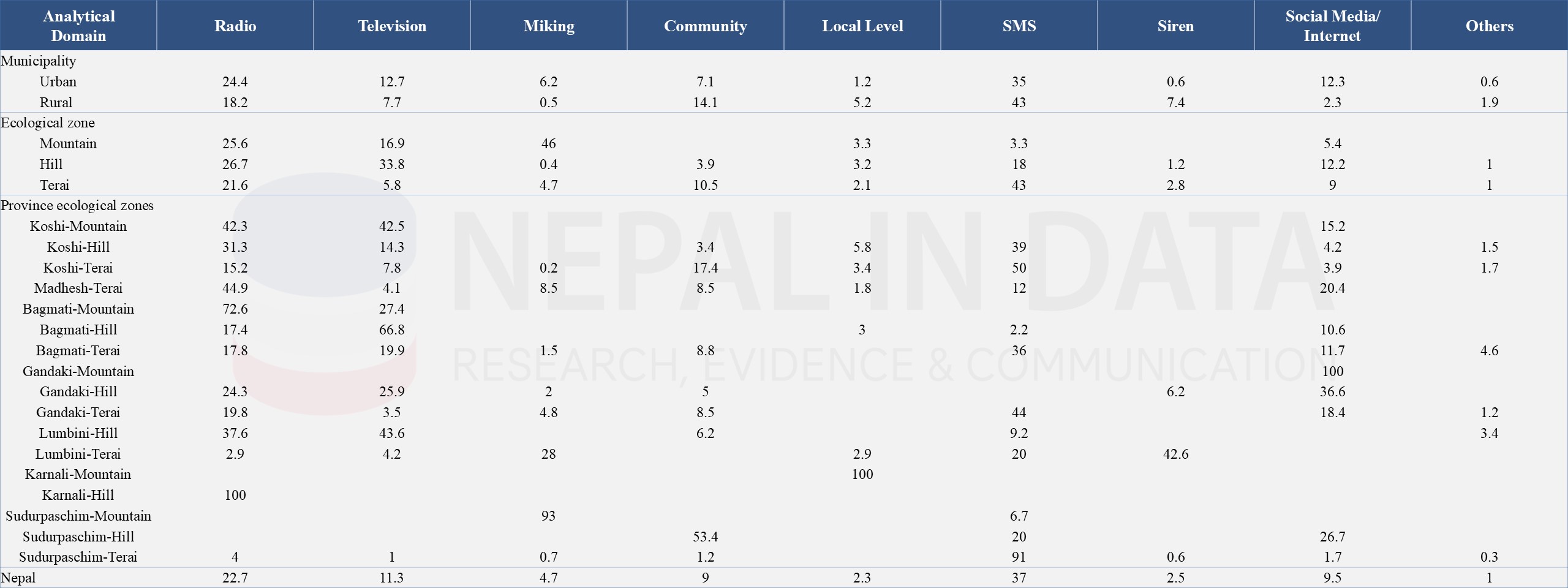
The following Table 11 presents the preparatory measures adopted by households across various analytical domains to protect themselves from disasters. In response to early-warning information, nearly 46 percent of households reported moving to a safe place. This finding provides the diverse measures adopted by households to safeguard themselves, their assets, and resources.
Table 11: Households (%) Reporting Preparatory Activities Performed After Receiving Early-Warning Information to Minimize Loss from Disaster, 2022

Key Takeaways
Environmental management and protection are concerned with the sustainable management of natural resources considering human impact, needs, and goals, and maintaining the health of ecosystems. In Nepal, we are weak in environmental governance (natural resource management, institutional strength, enforcement of regulations, extreme event preparedness, environmental education, and collaboration). There is a need to increase investments in environmental governance by collaborating with the three tires of governments, local communities, and international stakeholders.






